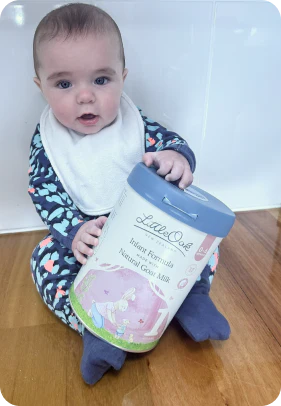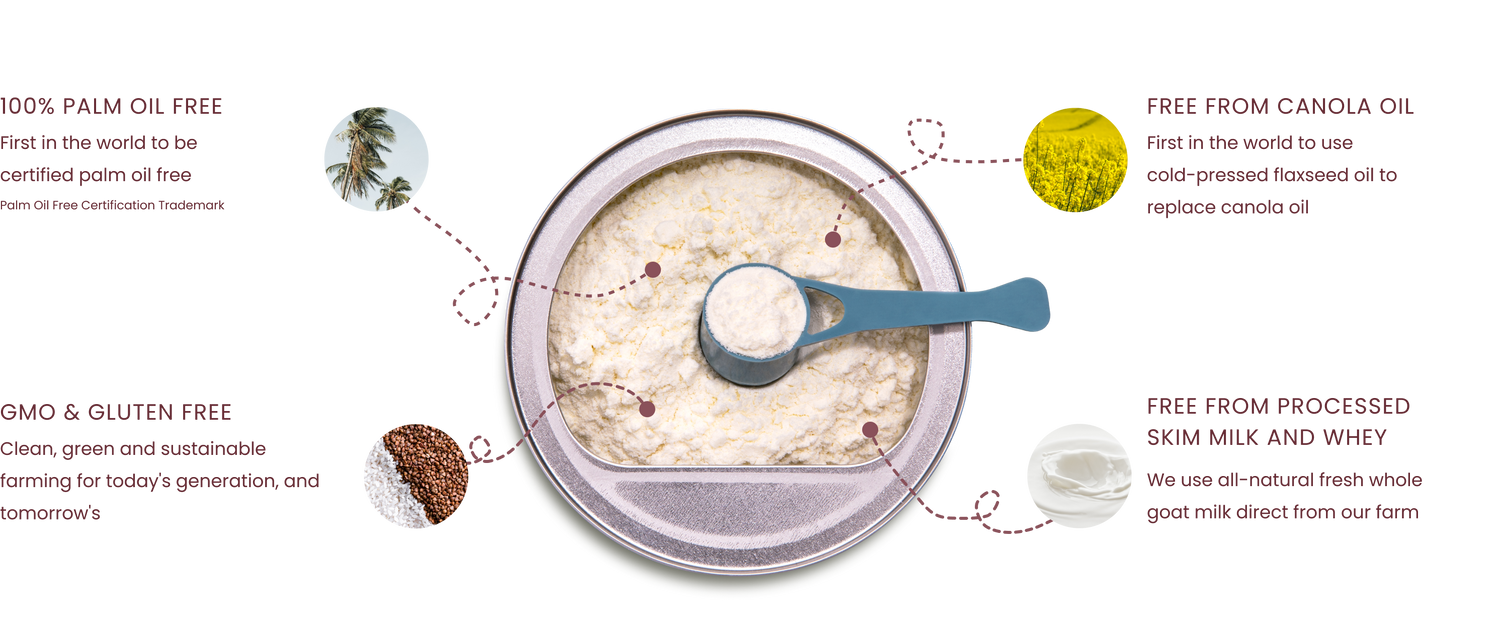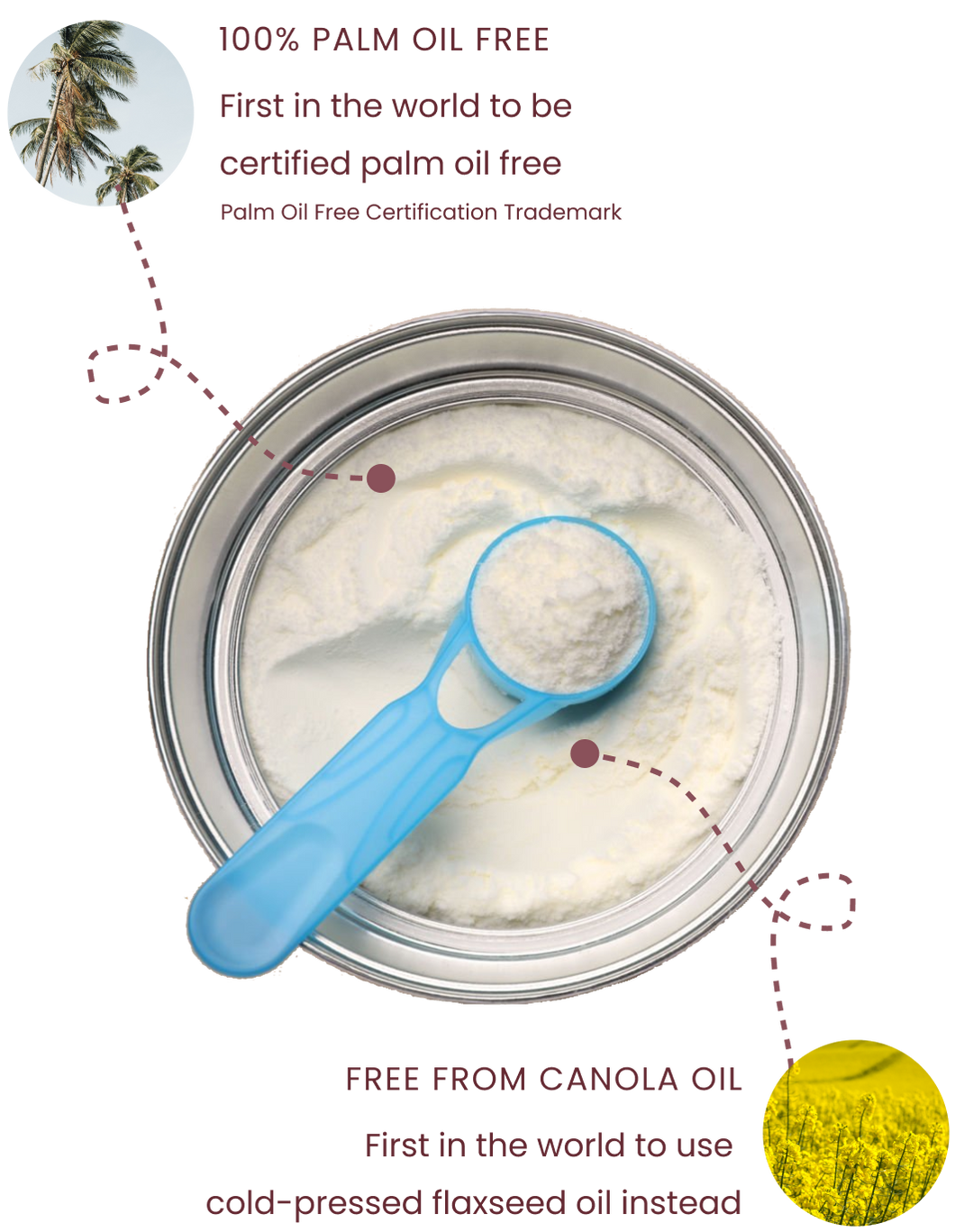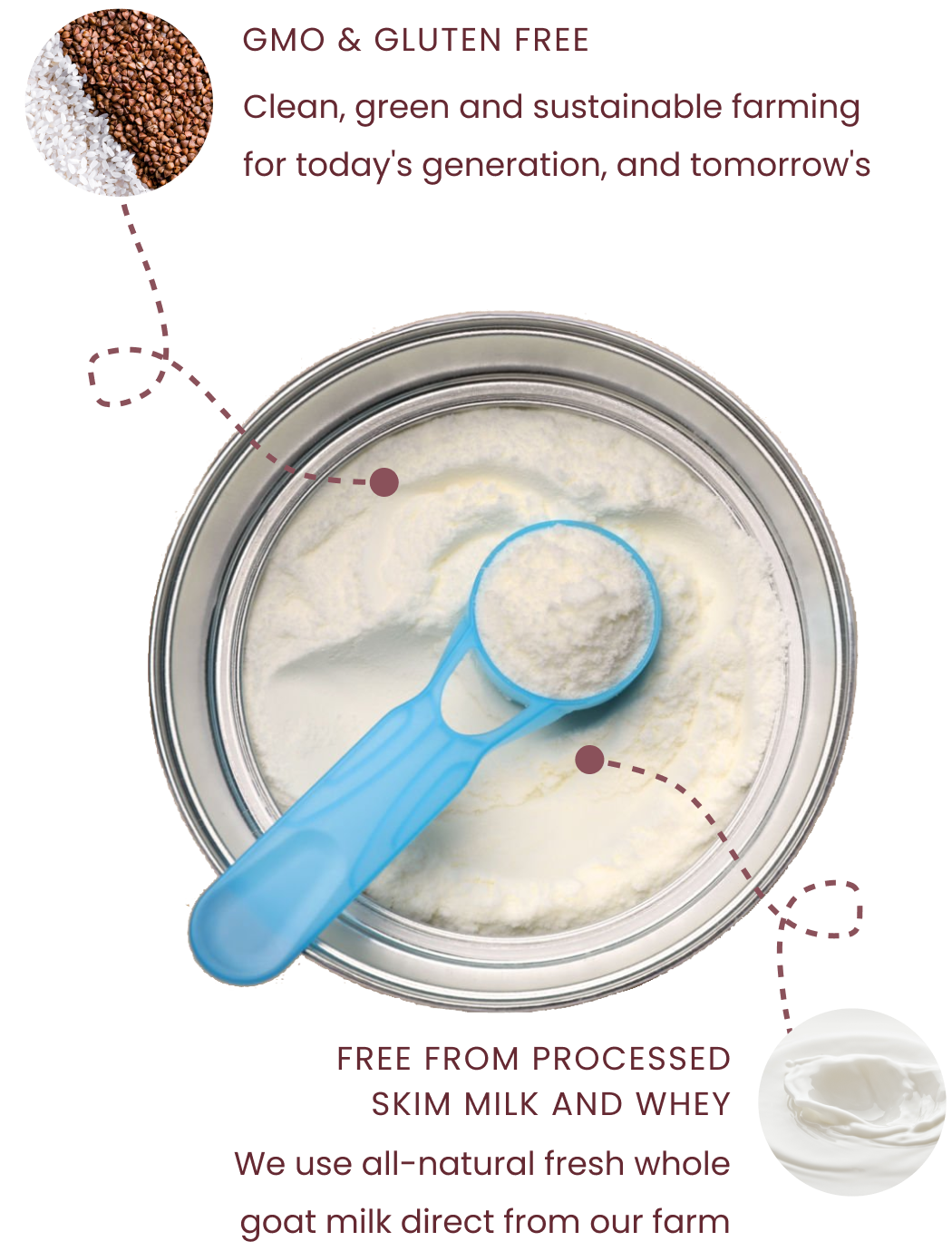For generations, cow’s milk has been the standard choice for baby formula when families couldn't or chose not to breastfeed. But at LittleOak, we’ve rediscovered something special—something the world once knew and loved: goat’s milk.
Favoured for over 2,000 years — even by Cleopatra herself — research now shows it can offer wonderful benefits for little tummies. Goat milk and the infant gut microbiota: a white paper highlights the beautiful benefits of goat’s milk and its use in infant formula — particularly its superiority to cow’s milk in nurturing good gut health.
But, if you’ve read the paper — or any research article, for that matter — you’ll know the language isn’t the easiest to follow. That’s why we’ve created a little glossary with key terms from the research, so you can better understand how goat’s milk nurtures your little one’s gut from the inside out. Let’s dive in.
Gut microbiota
You can think of this as a long name for the bacteria, viruses, fungi and other microbes that reside primarily in the large intestine. Together, they play an important role in human health and have been shown to support digestion, pathogen protection and the immune system. In fact, the gut microbiota is so important that many scientists now consider it as a separate organ.
Gut microbiota dysbiosis
This simply means that the gut is out of balance – there's too much bad bacteria and not enough good. A balanced microbiota has a healthy diversity of microorganisms, and when this delicate balance is thrown off, it can lead to tummy troubles, and inflammation and even impact how the immune system responds.
Prebiotic
A prebiotic is a special type of fibre that we can’t digest but plays an incredibly important role in supporting good gut health. They act as the “food” for already present friendly bacteria in the gut, helping them grow and do their job.
Probiotic
A probiotic is a live microorganism that adds to the existing good bacteria in the gut, giving us a health benefit. You can think of this as good gut bacteria.
Milk oligosaccharides
Oligosaccharides are found in goat’s milk, cow’s milk and breast milk and are a type of prebiotic fibre that can stimulate the growth of good bacteria in the gut. Interestingly, the oligosaccharides that we find in goat’s milk are much more similar to those in breast milk, compared to those in cow’s milk. This is perhaps the most important consideration when it comes to goat’s milk and its superiority to cow’s milk for good gut health in babies.
Bifidobacterium and Lactobacillus
These are two really important bacteria species and are essential for health and well-being, especially in babies. Breastfed babies have naturally high Bifidobacterium and Lactobacillus levels, and these are responsible for keeping the gut and the body healthy. Interestingly, babies fed goat’s milk have been shown to have more similar levels of these bacteria species to breastfed babies, compared to those who are fed cow’s milk.
Fatty acids
These are essentially the building blocks of fats and are important for your little one’s growth and development. There are three main types of fatty acids: long-chain, medium-chain and short-chain. Both goat’s milk and breast milk are high in medium-chain fatty acids (MCFAs), while cow’s milk is higher in long-chain fatty acids (LCFAs). What does this mean? Well, medium-chain fatty acids are smaller and easier to digest than long-chain fatty acids—making goat’s milk naturally gentler on little tummies.
Mucin
Mucin is a type of fat globule that we naturally produce in our bodies. Interestingly, it is found in both goat’s milk and breast milk, but not in cow’s milk. Mucin helps protect your little one’s gut by preventing bad bacteria and pathogens from settling in. It basically coats the inside of our gut, creating a protective barrier — much like an antibiotic effect.
A1 and A2 proteins
These are two different types of proteins found in milk. A1 proteins are slightly bigger, can be more difficult for babies to digest and can also have an inflammatory effect in the body. Cow’s milk is quite high in A1 protein, which can sometimes lead to digestive issues and even immune reactions such as eczema. Goat’s milk, on the other hand, mostly contains A2 proteins, which are significantly easier for babies to digest and do not cause an inflammatory reaction.
Gut barrier
The gut barrier is basically the interface between the external environment and our internal body. It prevents external pathogens, diseases and bacteria from entering the bloodstream — because when they do, it can lead to an immune reaction.
Tight junctions
A healthy gut acts like a security gate to keep undigested foods or pathogens from entering the bloodstream. This “gate” or “gut barrier” is held together by something that we call tight junctions. If these tight junctions separate, these undigested foods and pathogens can enter the bloodstream and cause an immune response. So, keeping these tight junctions together is really important for protecting the gut barrier and beneficial bacteria play an important role in keeping them intact.
IgE-mediated reactions
This is a rapid allergic reaction and one that often involves anaphylaxis or difficulty breathing. It often happens immediately upon contact with the food that you are allergic to.
Non-IgE mediated reactions
Non-IGE reactions have a delayed onset and are often characterised by symptoms such as diarrhea, constipation, or eczema.
From our family to yours, we hope you have found this little guide helpful. If you have any questions at all, please do reach out to our CareTeam. We are always here.


















